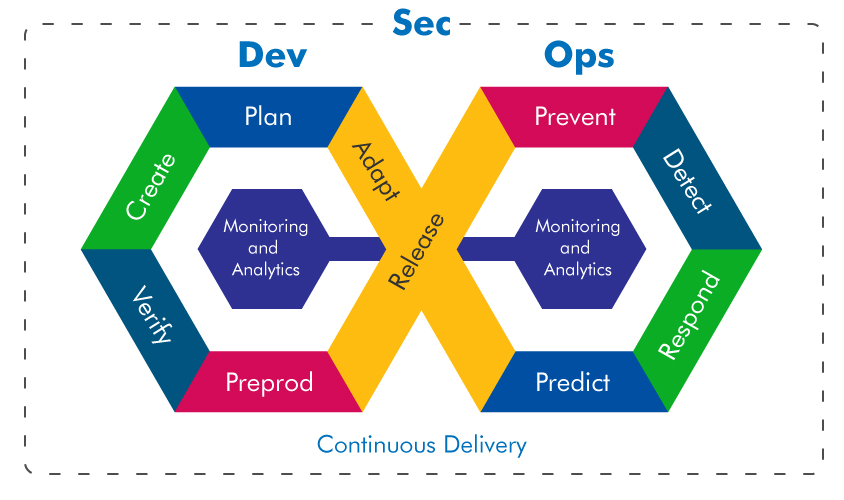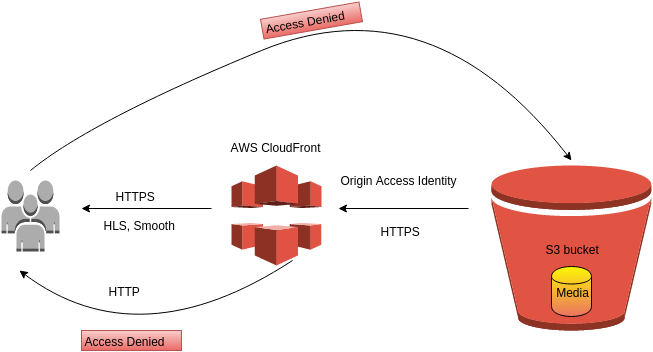We spoke about what DevSecOps is, its importance in the software development life cycle and finally the challenges it faces in the current development in my last blog. Continuing that we will look at how we can start integrating security into the DevOps process seamlessly
Solution to meet the demands
There is no one-size-fits-all approach when it comes to adopting DevSecOps, which is the most crucial factor to be considered. Your organisation, architecture, and tech stack will determine what works best for you. This may come as a bit of a shock to those more used to a traditional security strategy, but rest assured, the advantages are soon obvious.
Nevertheless, switching from DevOps to DevSecOps is more complicated than just including a security team. Every team and procedure within the organisation has to incorporate security as a core component. You can be confident that this bottleneck will no longer exist in your continuous delivery pipeline if you take this action. There are a few important factors to consider to make your DevSecOps integration successful.
Automation
With DevOps, you are already benefiting from automation, so there is no reason why your security efforts should be any different. You must largely rely on automated procedures at frequent checkpoints before releasing to production if you want controls and testing to occur early and frequently.
This strategy relies on an end-to-end automation and orchestration platform, which gives you more visibility and control. The automated tools you have at your disposal may assist you with privileged credentials management, software composition analysis, vulnerability and penetration testing, and status and dynamic code analysis.
Shift Left
You need to incorporate security far sooner in the DevOps process. You may avoid costly mistakes by integrating security rules early on, engineering them into design and deployment, and including testing tools into development, rather than leaving it until the very end of your SDLC.
You create it in more simple and less expensive such that problems are fixed early in the development lifecycle. During development, incorporate automated tests and code analysis tools. And during deployment and production, keep security at top of your mind. You’ll find and then fix security problems far sooner, saving your team from a lot of trouble.
Loopity loop
Your automated pipeline turns into a closed loop where testing, feedback, and correction are ongoing processes. It becomes very helpful only when automated security processes are carried out regularly and across the SDLC. While routine checkpoints to track changes, test for bugs, and ensure advancements are being made, CI/CD technologies that easily interact with your security scanning and testing solutions may assist assure best practice.
Think differently
You must change the culture surrounding security if you want it to become an essential and inherent element of your organisation developing the software. Your DevOps team needs your assistance in embracing security and doing it properly. That entails a collaborative setting where trust is essential, a working feedback loop and a clear commitment to making sure your employees receive the training they require.
This transformation necessitates that operators and developers jointly accept responsibility for security rather than assuming it is someone else’s job. One of the methods to make this happen is making security champions available as a point of contact for any questions and as a role model to the rest of the team throughout the transitional time. Security will cease being a function and turn into an attitude throughout the entire organisation if culture is addressed in this manner.
Optimise
With efficient procedures and clearly stated security standards, automation is useful. To avoid putting security on the back burner, a clear strategy from the start is essential. Setting out what is needed throughout the design and architectural stages of a project is crucial because everyone should be on the same page about security needs.
It makes sense to handle security the same way you would any other testing-required feature. Develop a repeatable procedure, decide on the criteria you’re striving for, include it among the other metrics you’re monitoring, and be sure to record it. Your DevSecOps initiatives will be transparent to the whole organisation, bringing teams together and ensuring process improvements.
Be mindful
Each new member of your DevOps team has to have a fundamental grasp of secure code and the pitfalls to avoid. But integrating a better understanding of security implications into your organisation can help you avoid possible errors, guarantee contributions and releases stay on schedule, avoid skipping necessary testing, and prevent software security from being compromised.
Encourage early and frequent collaboration between DevOps teams and security engineers. This will make it possible to share security responsibilities throughout the development process, improve communication, and assist remove siloed team practices. Threat models may then be developed to match feature requirements, and developers and operations personnel will be aware of their responsibilities from the onset.
Take the step
DevOps should by definition include the full SDLC, including security. However, due to outdated methods and segregated teams, a hasty, last-minute approach has taken hold in certain organisations. Your organisation is expressing its regard for security and the fact that it is a key component of the way you operate by specifically inserting the word “Sec” in the name of your strategy.
DevSecOps won’t remove all of the risks but it is okay because the steps taken to improve security are more important than having no security. The face-paced delivery requirements of DevOps conflict with the pursuit of excellence. Although security will never be flawless, a DevSecOps attitude, ongoing assessment, and increased visibility will put your security posture well ahead of the competition. Additionally, you’ll be able to adjust as necessary to meet the demands of your consumers, market norms, and technological improvements.
Whilst security professionals are more important than ever, DevSecOps places an obligation on all IT professionals to contribute to making sure speed and security go hand in hand. Best practices enable earlier issue detection, more efficient problem solving, and dramatically lower risk.
References
- Image courtesy from Learning Security from Mayur
- https://www.pagerduty.com/blog/devsecops-ops-guide/




